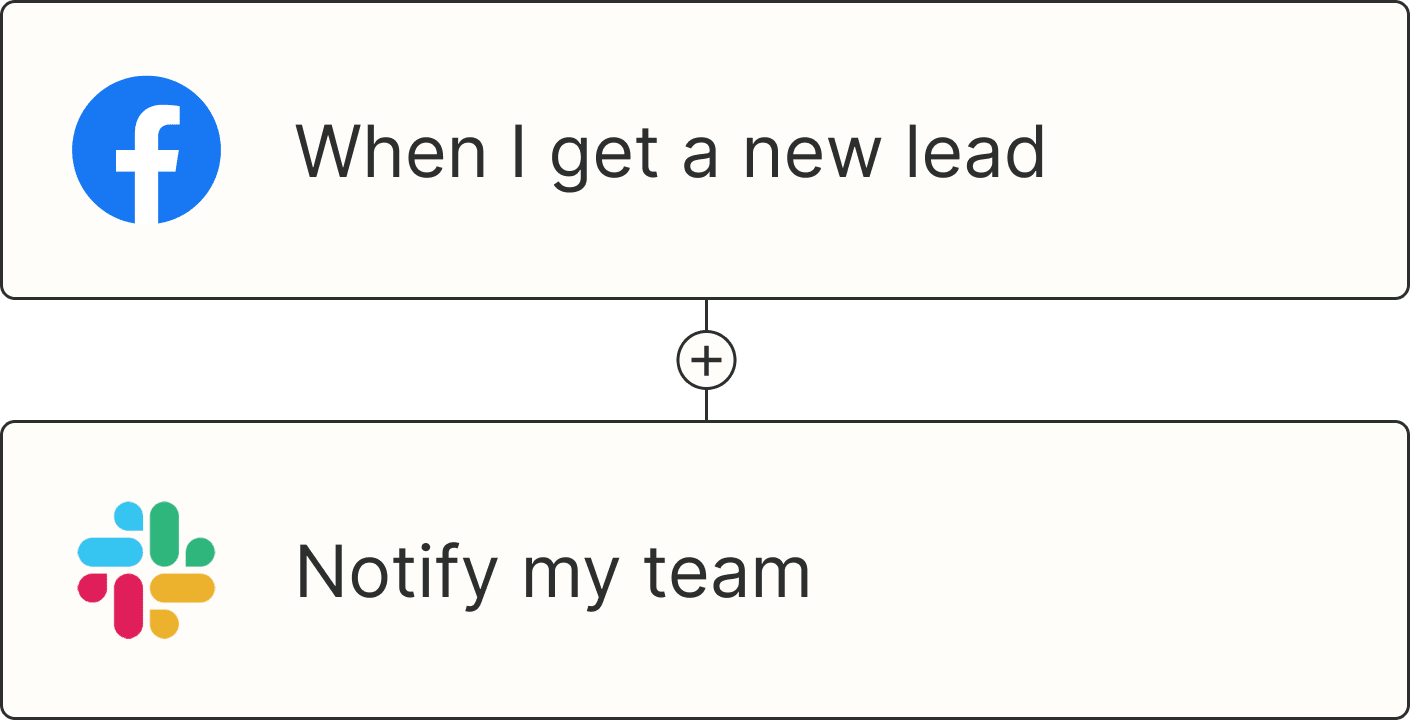I've never met any of my co-workers in real life. Zapier is a fully remote company—which means they hired me based on Zoom interviews, and every interaction with my team so far has been virtual. For all I know, everyone I work with is an (admittedly very cool) AI bot.
But my irrational conspiracy theories aren't what we're here to talk about.
Let's just say I'm very familiar with Zoom interviews, and I know how awkward and uncomfortable they can be compared to in-person meetings. From technical glitches to background noise mishaps, there are plenty of ways for a Zoom meeting to go sideways.
If you're trying to land your next job on Zoom (or come across better in everyday remote meetings), here are a few actionable tips from experts to help you ace your next video interview.
Table of contents:
Optimize your lighting and background
Be honest—does your desk back up to a sad blank wall? They say you should dress for the job you want, and if two-thirds of what your interviewer sees is your Zoom background, it's a good idea to bring that same energy to your surroundings.
Robbin Schuchmann, the co-founder of EOR Overview, says, "Lighting and background matter more than you think. Early in my career, I did a Zoom interview with a window behind me. Big mistake. I looked like a shadowy figure from a noir film, and the interviewer spent half the time squinting. Now, I always tell candidates: treat your setup like a first impression. Natural light in front of you? Instant glow. A cluttered background? Distracting. A tidy bookshelf or simple wall? Professional."
Of course, you could always blur your background, but there's a case to be made for letting some personality shine through instead. Your background is an asset that can help you curate your first impression. Robbin continues, "This isn't just about vanity, it's psychology. A well-lit, neutral background keeps the focus on you and your answers. It signals preparedness, attention to detail, and respect for the interviewer's time. You could have the perfect resume, but if your lighting screams, 'I'm interviewing from a cave,' it's an uphill battle."
Head over to your Zoom settings, and play around with the Background & effects options ahead of time to see what works.

Test your setup ahead of time
There's nothing worse than logging onto a call—especially one you're nervous about—and having immediate technical difficulties. If you have to spend the first five minutes of your interview switching the computer audio to your headphones after accidentally connecting to the Bluetooth speaker in your shower, that doesn't exactly start the interview on the right foot.
That's why it's good to get into the habit of making sure your tech works before the interview starts. "Test your setup ahead of time—this is non-negotiable for a smooth Zoom interview," says Iryna Melnyk, a marketing consultant with Jose Angelo Studios. "Ensure your camera, microphone, lighting, and internet connection are all functioning properly before the call."
You might even think about muting your audio by default when joining a call—so you don't make the mistake I did once of joining a company all-hands, unmuted, before my (loudly blaring) podcast had paused.
Iryna shared an interview experience to help illustrate the point. "I once had a candidate who couldn't troubleshoot their audio issues live, and the distraction overshadowed an otherwise strong interview performance. I was unable to fully focus on their answers because I was preoccupied with their technical difficulties. By testing ahead of time, you can avoid these types of distractions and focus on showcasing your skills and experience to the interviewer. This demonstrates preparedness and professionalism, which are crucial in any job interview."
Build rapport with light conversation
As someone who makes a sport out of derailing Zoom meetings into nonsense conversations as often as possible, I fully support adding some small talk into even the most formal of settings. Denise Fowler, a career coach and the founder of Career Happiness Coaching, agrees. "Think of those first moments before the Zoom interview as an opportunity to create a connection, just like you would if someone was walking you to the interview room. Starting with light, informal conversation before the interview officially begins can bridge the connection gap often felt on Zoom."
Not only does a little small talk help alleviate the tension if you're nervous, but it actually serves a psychological purpose. Denise explains, "This kind of rapport-building mirrors the casual interactions you might have in person and shows interviewers that you're personable and easy to work with, which is often just as important as your qualifications."
Be intentional about your energy level
One of the worst things about Zoom meetings is that it's harder to pick up on non-verbal cues than in an in-person setting. I always have to remind myself not to gush about my dog for too long, because I'm less likely to see when my co-workers' eyes have glazed over.
But that disconnect can also translate into lower perceived energy levels—which means if you're trying to make a good first impression, it can be a good idea to adjust your enthusiasm to compensate.
Syvie di Giusto is a keynote speaker who helps professionals stand out for all the right reasons. She explains, "Zoom has a way of flattening personality, toning down charisma, and making even the most dynamic professionals seem less engaging. Because energy translates differently on camera. That's why I recommend bringing 20-30% more enthusiasm than you think is necessary."
She gives some helpful examples. "Vary your tone and pacing more intentionally. Change it up—add more inflection when emphasizing key points, and slow down when making an important statement. Speak louder and just a tick faster than usual. It keeps your energy sharp and engaging. Use more expressive facial cues because on video, they play an even bigger role than in person. Avoid the dreaded 'Zoom neutral face' that can make you seem disinterested or disengaged. Engage with your hands (within reason). Hand gestures add impact but keep them visible and controlled—no desk knocking or unnecessary distractions. Sit up, lean in, and show engagement. If you're slouched back, you'll look low-energy, no matter how excited you actually are."
It might seem weird, but Syvie says, "Think of it like broadcasting charisma through a screen."
But how do you know how much energy is too much? It's a good rule of thumb to use the interviewer's energy as a gauge. Chris Heerlein, the Chief Executive Officer of REAP Financial, suggests, "Interviews are just as much about connection as they are about qualifications. When you're on video, there's an added layer of disconnect, so consciously matching the interviewer's tone, energy level, and even pacing can make the conversation feel more natural and engaging."
So what does that look like in practice? Chris says, "For example, if they're speaking in a calm, measured tone, and you come in overly animated, it can feel jarring and even inauthentic. On the flip side, if they're more upbeat and conversational while you keep it too formal, the interaction can feel stiff. Subtly mirroring the way they communicate makes you seem like a better cultural fit without you even saying a word."
Be concise and structured
You might be inclined to ramble in Zoom interviews, especially if you're nervous or particularly enthusiastic about the subject matter. But as great American villain Aaron Burr famously belted out in the key of G: "Talk less—smile more."
According to Sebastian Wade, a real estate consultant with Eden Emerald Buyers Agent, brevity is key. "If you want to ace a Zoom interview, be concise. Long-winded answers make it harder for the interviewer to remain engaged, especially when speaking over video. Attention spans are shorter in virtual settings, and there are no in-person cues to help keep the conversation flowing naturally. Clear, to-the-point responses show confidence and make it easier for the interviewer to absorb what you are saying."
Sebastian offered some helpful guidelines: "A good strategy is to answer in about 30 to 60 seconds unless the question requires a deeper explanation. Giving a structured response, pausing to check if the interviewer wants more details, and avoiding rambling makes a huge difference. Keeping answers focused shows that you respect their time and understand how to communicate effectively, which is an important skill in any job."
Maintain strong eye contact
Unless you're a TikTok influencer, you probably haven't practiced staring straight into the camera while on video. It can feel a little weird to look at the camera instead of the face on your screen, but it can actually make a big difference in how you're perceived.
Take it from Megan Nicholls, a business English coach with Mega Language Coach. "Since I teach online and spend a lot of my time in Zoom calls, I know they can sometimes feel impersonal and awkward. One key tip is to maintain strong eye contact by looking at the camera, not the screen. It can be tempting to look at the video of yourself, but it is difficult to make an authentic connection with the interviewer in this way."
In fact, if you can't stop yourself from staring at your own face, you might want to hide self view on Zoom completely—just right-click on your picture, and choose Hide self view. That way, you can focus on the other person—and stare down the camera when it's your turn to talk.

Why is this important? Megan explains, "I often advise my clients to directly engage with the interviewer, making them appear more confident, attentive, and professional. Keeping your focus on the camera builds a stronger connection and shows that you're fully present in the conversation. Strong eye contact can make a lasting impression and help you stand out as a confident and capable candidate."
Handle pauses with confidence
As a chronic yapper, I really had to tone down my tendency to fill silences when I started dating my introverted partner. Thankfully, this skill translates well to Zoom, because awkward silences can be even more pronounced on video calls. It's important not to let that unpleasant feeling get to you.
Oliver Morrisey, the owner and director of Empower Wills & Estate Lawyers, says, "I've been in many Zoom calls, both for interviews and client meetings, and the thing that always makes a candidate stand out is how they handle silence. People tend to panic when there's a pause, especially in a video interview. There's a natural urge to fill the space with words, even if they're not necessary. But using pauses the right way makes a person come across as more thoughtful and confident."
Oliver suggests using the silence to your advantage. "Taking a second to think before answering a complex question shows that someone is actually considering their response, not just blurting out the first thing that comes to mind. It keeps the answers clear and structured instead of scattered. It makes the conversation feel more natural as well, because in real life, people take pauses when they're thinking. If someone speaks too quickly without stopping to process, it will seem like they're either nervous or just saying what they think the interviewer wants to hear."
Simplify your Zoom meetings with automation
If a company interviews on Zoom, you'd better believe you'll use it a lot on the job, too. Once you land the job, you can use Zapier's Zoom integration to do things like managing your contact list and calendar, saving and storing Zoom recordings, and even transcribing Zoom meetings with AI. Learn more about how to automate Zoom, or get started with one of these templates.
Zapier is the most connected AI orchestration platform—integrating with thousands of apps from partners like Google, Salesforce, and Microsoft. Use interfaces, data tables, and logic to build secure, automated, AI-powered systems for your business-critical workflows across your organization's technology stack. Learn more.
Related reading







